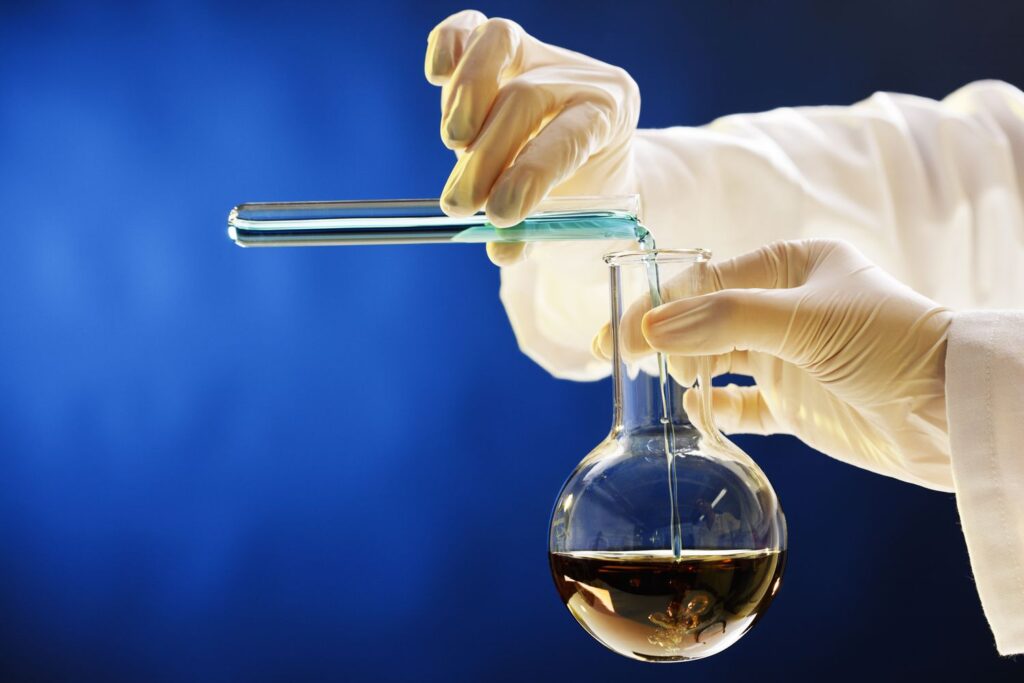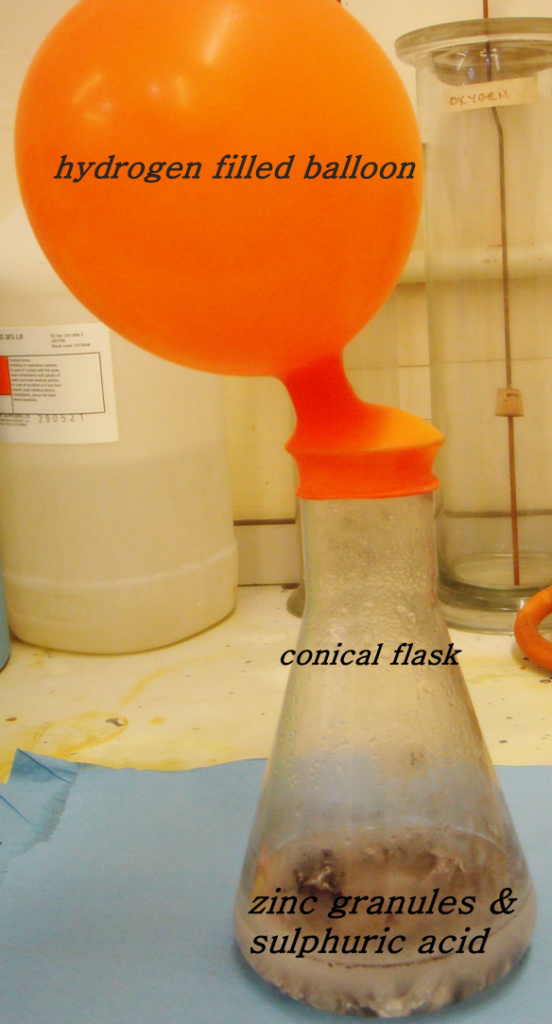
The release of hydrogen (H2H_2) and oxygen (O2O_2) gases typically occurs through redox reactions, where a substance is either oxidized (loses electrons) or reduced (gains electrons). These gases can be released in different reactions depending on the substances involved. Let’s break down the detailed chemical processes in which H2H_2 and O2O_2 are released.
1. Release of Oxygen (O2O_2)
Oxygen is commonly released in reactions where an oxidizing agent breaks down or where a substance is oxidized to form oxygen gas. One classic example is the decomposition of hydrogen peroxide (H2O2H_2O_2).
Example 1: Decomposition of Hydrogen Peroxide
Hydrogen peroxide decomposes into water and oxygen gas when it breaks down, a process that is often catalyzed by the presence of catalysts like manganese dioxide (MnO2MnO_2) or potassium iodide. 2H2O2→2H2O+O22 H_2O + O_2
- Reaction Mechanism:
- In this reaction, hydrogen peroxide (H2O2H_2O_2) undergoes a decomposition process where one oxygen atom from each hydrogen peroxide molecule is released as O2O_2.
- Hydrogen peroxide is unstable and decomposes into water (H2OH_2O) and oxygen gas (O2O_2).
- The reaction occurs faster in the presence of catalysts, such as MnO2MnO_2, which provide an alternative pathway with a lower activation energy.
- Observations:
- The reaction produces oxygen gas, which can be observed as bubbles.
- The solution typically turns colorless (from the initial pale yellow of hydrogen peroxide) as it decomposes.
- Catalysis by MnO2MnO_2:
- MnO2MnO_2 acts as a catalyst to speed up the reaction without being consumed. The manganese dioxide helps to break down the hydrogen peroxide into water and oxygen at a faster rate.
Example 2: Photosynthesis (Biological Process)
In photosynthesis, plants use sunlight to convert carbon dioxide and water into glucose, with oxygen as a byproduct. 6CO2+6H2O+light energy→C6H12O6+6O26 CO_2 + 6 H_2O + \text{light energy} \rightarrow C_6H_{12}O_6 + 6 O_2
- Reaction Details:
- In the light-dependent reactions of photosynthesis, water molecules are split to release oxygen gas.
- This process takes place in the chloroplasts and involves the photolysis of water, which provides electrons and protons for the creation of glucose.
2. Release of Hydrogen (H2H_2)

Hydrogen gas is often produced in reactions where a reducing agent donates electrons, such as in the reaction between metals and acids or in some electrochemical processes.
Example 1: Reaction Between Zinc and Hydrochloric Acid
When zinc (ZnZn) reacts with hydrochloric acid (HClHCl), hydrogen gas (H2H_2) is released. Zn+2HCl→ZnCl2+H2Zn + 2 HCl \rightarrow ZnCl_2 + H_2
- Reaction Mechanism:
- Zinc (a metal) undergoes oxidation, losing electrons to form Zn2+Zn^{2+}.
- The H+H^+ ions from hydrochloric acid gain these electrons to form hydrogen gas (H2H_2).
- Observations:
- Hydrogen gas bubbles are released in the form of effervescence.
- Zinc chloride (ZnCl2ZnCl_2) is formed as a soluble salt, and the solution becomes acidic.
Example 2: Electrolysis of Water
The electrolysis of water is another common method for producing hydrogen and oxygen gases. When an electric current passes through water, it breaks down the water molecules into hydrogen gas at the cathode and oxygen gas at the anode. 2H2O→electric current2H2+O22 H_2O \xrightarrow{\text{electric current}} 2 H_2 + O_2
- Reaction Mechanism:
- At the cathode (negative electrode), water is reduced to form hydrogen gas and hydroxide ions: 2H2O+2e−→H2+2OH−2 H_2O +2e-
- At the anode (positive electrode), water is oxidized to form oxygen gas and hydrogen ions
- The overall reaction is: 2H2O→electric current 2H2+O2 H_2O+ 2 H_2 + O_2
- Observations:
- Hydrogen gas is released at the cathode, and oxygen gas is released at the anode.
- The reaction requires a direct current (DC) power source, and the water is typically acidified with an electrolyte (like sulfuric acid) to improve conductivity.
Example 3: Reaction Between Sodium and Water
When sodium metal reacts with water, it produces hydrogen gas and sodium hydroxide. 2Na+2H2O→2NaOH+H22 Na + 2 H_2O→ 2 NaOH + H_2
- Reaction Mechanism:
- Sodium metal donates electrons and is oxidized to form sodium ions (Na+Na^+).
- The H2OH_2O molecules are reduced by accepting electrons to form hydrogen gas (H2H_2).
- Observations:
- Hydrogen gas is released, and the reaction is exothermic, often producing enough heat to ignite the hydrogen gas.
- Sodium hydroxide (NaOHNaOH) is produced, and the water becomes alkaline.
3. Simultaneous Release of H2H_2 and O2O_2
In certain reactions, both hydrogen and oxygen gases can be produced simultaneously. One well-known example is the electrolysis of water, which was mentioned earlier.
Electrolysis of Water:
2H2O→electric current2H2+O22 H_2O → 2 H_2 + O_2
- Overall Reaction:
- Electrolysis of water results in the decomposition of water into hydrogen gas at the cathode and oxygen gas at the anode.
- Applications:
- The process is widely used in the production of hydrogen gas for fuel cells, industrial processes, and even as a clean source of hydrogen for energy.
Conclusion
The release of hydrogen and oxygen gases occurs in a variety of chemical reactions, from simple reactions like the reaction between metals and acids to more complex processes like electrolysis and photosynthesis. These gases can be produced either by oxidation (oxygen) or reduction (hydrogen), and the mechanisms depend on the specific reaction involved.
- Oxygen is typically released in reactions where oxygen atoms are formed as part of the product, like in the decomposition of hydrogen peroxide or photosynthesis.
- Hydrogen is often released in reactions where a substance is reduced, such as in the reaction of metals with acids or the electrolysis of water.
Each reaction provides valuable insights into the principles of redox chemistry, and these gas-releasing reactions have wide applications in industries like energy production, manufacturing, and environmental science.

Ankit
Excellent